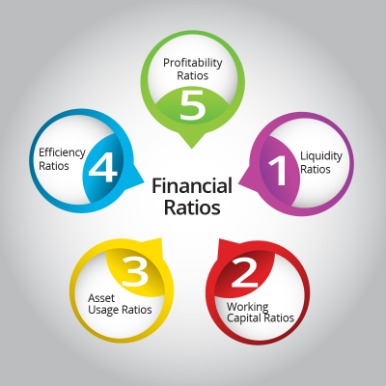Content
The $30 million in SG&A and R&D are the total operating expenses of our company. A downside to this is that there will be less people selling, delays in helping customers or even a need to increase security with fewer eyes on the store sales area. The store may lose business as a result and sometimes the loss may outstrip the initial savings of reducing the payroll bill.
- Some variation in production levels from period to period is expected and establishes the range of normal capacity.
- Understanding operating expenses is vital for you to keep accurate accounting records and stay focused on keeping your business profitable and strong.
- Non-operating expenses — These types of expenses aren’t vital to business operations.
- Use the SaaS rule of 40 to evaluate the general health of your software business.
When a company’s operating costs are beneath revenue, the company is making money with the product or service. When expenses are higher than revenue, there is no profit made. Common Operating Expenses for a company include rent, payroll, travel, utilities, insurance, maintenance and repairs, property taxes, office supplies, depreciation and advertising. Operating costs are expenditures directly related to day-to-day business activities, excluding the processes involved in manufacturing a product or delivering a service.
Start your 3-day free trial today!
They then risk losing customers to competitors who are able to produce similar goods at a lower price point. The economies of scale principle can be limited in that fixed costs generally need to increase with certain benchmarks in production growth. For example, if a company cuts its advertising costs, its short-term profits will likely improve since it is spending less money on operating costs.

They may order well in advance and possibly make a down payment to secure their goods (or services). More detailed definitions can be found in accounting textbooks or from an accounting professional. Xero does not provide accounting, tax, business or legal advice. Some categories, such as depreciation, are governed by strict rules.
What is operating expenses examples?
Regardless of how your lease is structured, one way or another, your business pays its share of the operating expenses for the building(s) that you occupy. As such, understanding what goes into the expenses for your spaces can help you prepare to better manage those costs. As a benchmark, the average spend for this area is approximately 20% of your revenue. The costs allocated here should improve your company’s productivity and efficiency daily. It involves all expenses incurred in the day-to-day operations of your business. Operating expenses are different from the cost of goods sold (COGS), which are the direct expenses a business pays to purchase or manufacture its products.
You’ll lose loyal customers, and your bottom line will show the result. Depreciation is an accounting process whereby a firm writes off the value of an asset over time. Substantially, as recognition of the fact that the asset’s value reduces.
What Does an Increase in Operating Expenses Mean?
And Distel echoes this advice, adding that tracking and reporting historical costs are integral components of budgeting for (and forecasting) upcoming costs and projected profits. “Performing a routine overhead cost analysis may help a business owner determine ways to reduce costs or make the business run more efficiently,” she said. Business expenses can be a little confusing, whether you are considering starting a new retail business, or up-and-running but handling your own bookkeeping and accounting. Alternatively, they may avoid buying items and lease or rent them instead. The additional expense can, however, often be justified by the extra flexibility, improved cash flow and ability to keep cash in hand on the balance sheet. OER can also be used to gauge the difference in operating costs between two properties.
- Since operating expenses immediately impact profitability, they require ongoing monitoring and control.
- An operating expense is an expense that is related to a business’s core operations.
- When you are billed for your pro-rata share of expenses, you have a couple of ways to control expenses.
- Amortization refers to non-physical assets like a patent that becomes less valuable as it gets closer to expiry.
We’ll be in your inbox every morning Monday-Saturday with all the day’s top business news, inspiring stories, best advice and exclusive reporting from Entrepreneur. Under many lease agreements, you’ll be expected to
provide the first month’s rent plus a security deposit. Get instant access to video lessons taught by experienced investment bankers. Learn financial statement modeling, DCF, M&A, LBO, Comps and Excel shortcuts. For each period, we can project the OpEx value by multiplying the % assumption by the revenue amount in the matching period, as shown in the screenshot above. Since SG&A as a percentage of revenue was 16.0% and R&D was 8.0% of revenue in Year 0, we’ll extend this across our assumptions section.
They are the costs involved in running a business to generate income. Typically, they’re tax deductible as long as a company operates to earn a profit, expenses are commonly known, and necessary. The Internal Revenue Service (IRS) allows businesses to deduct operating expenses if the business operates to earn profits. However, the IRS and most accounting principles distinguish between operating expenses and capital expenditures. A non-operating expense is an expense incurred by a business that is unrelated to the business’s core operations. The most common types of non-operating expenses are interest charges or other costs of borrowing and losses on the disposal of assets.
- There are several sub-categories of OpEx to become familiar with as your company grows in revenue and production.
- They include expenditures such as rent, inventory costs, marketing, and payroll, said Hillary Senko Cullum, a wholesale and retail consultant operating at HSC Advisors.
- Instead, OpEx remains relatively constant regardless of production volume.
- Research suggests that a 1% decrease in operating costs can increase profitability up to 10 times more than a corresponding increase in revenue, per Capgemini.
- Depreciation (and amortization) – records the diminishing value of assets that the business owns.
- Our free guide will help you understand the kind of point-of-sale system you need to run your business efficiently.
A low OER means less money from income is being spent on operating expenses. Everything else is a fixed cost, including labour (unless there is a regular and significant chance that workers will not work a full-time week when they report on their first day). Typically, companies with a high proportion of variable costs relative to fixed costs are considered to be less volatile, as their profits are more dependent on the success of their sales. In the same way, the profitability and risk for the same companies are also easier to gauge. Variable costs, like the name implies, are comprised of costs that vary with production. Unlike fixed costs, variable costs increase as production increases and decrease as production decreases.
However, by reducing its advertising, the company might also reduce its capacity to generate new business such that earnings in the future could suffer. The operating cost is deducted from revenue to arrive at operating income and is reflected on a company’s income statement. As a business owner, it’s important to have a comprehensive understanding of OPEX (operating expenses). Explore the significance of https://kelleysbookkeeping.com/ in greater detail with our simple guide, starting off with our rundown of the meaning of OPEX. It includes everything you need to run your day-to-day operations. For example, rent, utilities, travel, internet bills, legal, human resources payroll, and other costs that don’t fit into M&S or R&D.

COGS can be difficult to calculate depending on the complexity of the business and what it sells. In the simplest of terms, COGS include the beginning inventory plus inventory purchases minus the ending inventory. This formula includes the cost of purchasing the items, inbound freight, manufacturing (including labor), modification and packaging.
Payment terminal
Whether that result is good or bad depends on the norm for her industry. “While these are unavoidable costs to keep your business running it is important to be diligent about the level of expenditures and ensure they are workable within your cash flow,” she said. Operating expenses are important because they can help assess a company’s cost and stock management efficiency.

Alternatively, businesses must capitalize capital expenses/costs. You can have a degree of control over shared operating expenses, too. If your lease gives you the right to have CAM audits done, consider requesting one of your expenses seem out of the norm. An audit may be able to catch calculation errors on your landlord’s part.